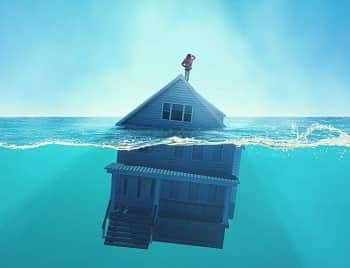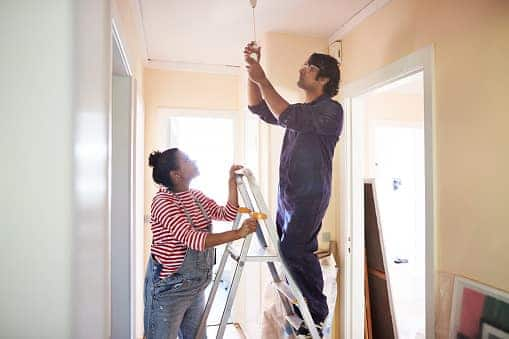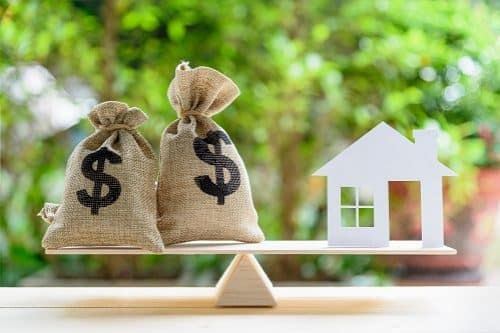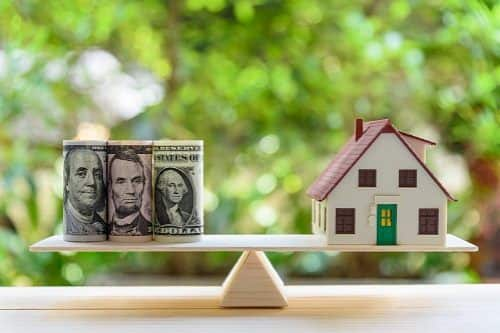What is an underwater home?
A home is underwater when the homeowner owes more on the house than it is worth.
For example, if your home's current market value is $280,000, but you owe $300,000 on the mortgage, your home is underwater or upside-down. You owe $20,000 more to your mortgage lender than your home would sell for. Putting that into even greater perspective, if you sold that home, you’d pay 100% of the sale proceeds on your mortgage loan and then you’d still owe an additional $20,000 out-of-pocket.
You may also hear this situation referred to as negative equity. If you have equity in your home, that means the home is worth more in the current market than you owe on your mortgage. This is a great thing! But when you have negative equity, it means quite the opposite. It means you are underwater and that is not a good thing.
What causes a home to be underwater?
According to John Romito, founder and real estate agent of Heart & Home Real Estate, "it can be difficult to even realize that a property has reached underwater status without having it appraised, but indications that problems are developing include falling property values among other homes in the area, and falling behind on payments. Falling behind can be particularly dangerous since falling too far behind on monthly payments can lead to the property being seized by the bank."
To fully understand how to avoid an underwater mortgage, it is essential to understand what causes it to happen to begin with. The bad news is some of it is out of your control, but the good news is, some of it is in your control. Here are a few of the most common causes:
A housing market bubble burst
In the early 2000s, a housing bubble caused an increase in housing values and prices. But eventually, that bubble burst and left many homeowners with mortgages higher than the values of their homes. This caused the 2008 housing crisis. Many of the homeowners with underwater homes today are still in recovery from that housing crisis.
Low down-payment loans
A standard conventional mortgage requires a down-payment of 20%. That means the mortgage lender is willing to loan you up to 80% of the home's value. Then, once the loan is in place, there is a 20% cushion between what you owe and what the home is worth.
For example, if you are buying a home with a value of $200,000, a conventional mortgage will lend up to $160,000, which is 80% of the value.
But there are several mortgage products today that allow people to pay as low as 0% down. While this can be a great thing for someone aspiring to be a homeowner without a large savings account, it can also be a bad thing as it removes the cushion between what is owed and the home value.
Excessive refinancing or borrowing against the home
A homeowner may decide to refinance their mortgage or borrow against the equity in their home. Reasons for this range from refinancing to lower interest rates or borrowing against the equity in the house to pay off other higher-interest debts.
Borrowing against the home's equity reduces the amount of equity available and, therefore, increases the risk of becoming underwater if there are shifts in the housing market that cause a decline in values.
Missed payments
Missing your mortgage payments can cause interest to compound and accumulate, which increases what you owe. Missing mortgage payments also results in no reduction in your principal balance. The combination of no principal reduction and accrued interest charges can result in your loan amount growing instead of declining and can ultimately cause an upside-down mortgage.
Location
The location of your home can either increase or decrease your risk of an upside-down or underwater mortgage. This is usually the result of the local economy or a decline in neighborhoods that drives down property values.
What states have the most and least underwater homes?
If you consider relocation and have your pick of where to go, reviewing the number of underwater mortgages in prospective areas would be worthy research. We collected 2020 data by state and county to show which areas have the most and least underwater homes.
Five states with the most underwater homes
In 2020, midwestern and southern states topped the charts for the highest percentage of homes underwater. The state with the most underwater homes, Louisiana, has 15.5% more homes underwater than the state with the lowest percentage, Vermont. If you plan to move to one of these states, take a look at our chart, by county, below to determine which counties you could locate that have the fewest underwater homes.
| State | Percentage of homes underwater |
|---|---|
| Louisiana | 19.3% |
| Illinois | 15.6% |
| Iowa | 15.5% |
| West Virginia | 14.3% |
| Arkansas | 13.8% |
Five states with the least underwater homes
Northeastern and western states are among the states with the lowest number of underwater homes. Only 2.6% of households in Vermont have upside-down or under mortgages.
| State | Percentage of homes underwater |
|---|---|
| Vermont | 2.6% |
| Nevada | 3.3% |
| Hawaii | 3.4% |
| Washington | 3.6% |
| District of Columbia | 3.8% |
Counties with the highest percentage of underwater homes by state
Underwater homes by quarter
As you’ll see in the chart below, the percentage of underwater homes in the U.S. has steadily declined throughout each quarter in 2020. By the end of the third quarter, there were 5% fewer homes underwater than at the beginning of the first quarter.
| 2020 quarter | Percentage of homes underwater |
|---|---|
| Q1 – January 1 through March 31 | 11% |
| Q2 – April 1 through June 30 | 10% |
| Q3 – July 1 through September 30 | 6% |
My home is underwater. What should I do?
The realization that your home is underwater can be very stressful and leave you wondering what to do next. If possible, the best thing to do is stay put and continue working to pay down the mortgage.
"Work to build more equity to your home. It's going to be a long and challenging journey, you may have to cut down your budget to the bare necessities and put all your extra income towards your home, or even get another job to add to your earnings, but it will all pay off once you pay down your principal", says Tal Shelef, co-founder of Condo Wizard.
If your circumstances do not permit you to stay put, you may need to speak with your lender about a short sale. Foreclosure or bankruptcy should be last on the list of options due to their negative impact on your credit for many years to come.
What does this mean for my homeowners insurance?
Your home should be insured for its replacement value in the current market. But what happens if the replacement value is less than what you owe on the mortgage?
Home insurance providers will not insure the home for more than what it costs to replace it. If you owe more than what the house can be insured for, you’re in a risky situation. If the home is destroyed, you may be faced with paying your mortgage company the difference. If you plan to stay in the house and continue paying until you’re no longer upside-down, be sure your home insurance policy covers the full replacement value of the home and take preventative measures to avoid damage and destruction.
The takeaway on underwater homes
Much like a home that is under water from flooding, a home that has an underwater mortgage is something that no one wants. Becoming upside down on your mortgage can be caused by a variety of factors, some in and some out of your control.
Regardless of cause, there are some things you can do to avoid getting in that situation such as paying a 20% down payment on your mortgage, making mortgage payments on time, avoiding borrowing too much of your equity, and carefully assessing prospective relocation areas.
Methodology
Insurance.com in 2020 commissioned quarterly surveys of counties with at least 2,500 properties with mortgages derived from publicly recorded mortgage and deed of trust data. Seriously underwater homes are defined as having a loan to value ratio of 125% or above, meaning the property owner owed at least 25% more than the estimated market value of the property.



 Have you ever heard someone say they are underwater or upside-down on their mortgage and wondered what that meant and how it happened? Spoiler alert: an underwater home has nothing to do with flooding.
Have you ever heard someone say they are underwater or upside-down on their mortgage and wondered what that meant and how it happened? Spoiler alert: an underwater home has nothing to do with flooding.


